ADADA ANCIENT CITY SURVEY
ADADA ANCIENT CITY SURVEY
Asst. Prof. Dr. Ahmet MÖREL
Adada ancient city is located in Isparta, Sütçüler District, Sağrak Village and in the area called Karabavlu by the people of the region. The earliest mention of Adada is on an inscription found in Termessos and from the quotations of ancient writers. The name of the city is first mentioned in the inscription of a treaty with Termessos and dated to the 2ndcentury BC. In ancient texts, the name of the city first appears in the 1st century BC. In his Geographika, Strabon mentions that Artemidoros talk about the name of Adada among other Pisidian cities. In later periods, Ptolemaios and Hierocles also mention the name of the city. We also know that mercenaries from Adada had served in the armies of Hellenistic kings. The steles of the soldiers from Adada found in Kypros (Cyprus) and Phoenicia are among the important proofs of the existence of the city in the Hellenistic Period.
Adada has an important transitional position between the Pisidia and Pamphylia. The city was important in terms of its contribution to the understanding of the archaeology of Pisidia due to the preservation status of the structures in Adada. There are many religious and public buildings in Adada. Among these, we can consider the theatre, houses from the Roman and Byzantine Periods, and Necropolis housing the tomb monuments.
The temples in Adada are among the important examples of the temple architecture in Pisidia from the Roman Imperial Period. The temple of Trajan is among the best-known examples of other temples in the Pisidia Region (Picture 2). The temple is dedicated to the Emperor Trajan and it is thought to have been built before 110-114 AD.
Another important temple in Adada is known as the Temple of the Emperors (Picture 3). The inscription on the lintel of the naos door of this temple reads: Theodoros, who had been the priest of the God-Emperors twice, the founder, the son of the city, the son of Nicomachus who had served as a probus, had this temple built with his own money, together with the xoanons and statues, and dedicated it to the God-Emperors and the city. It is thought that the temple was built after 114 AD in the same years as the Temple of Trajan.
The temple of “Emperors and Zeus Megistos-Serapis” is another temple standing in the city (Picture 4). The inscription on the architrave block of the temple reads: “To the God Augustus and Zeus Megistos Serapis and the homeland, Antiochus, the son of Tlamoas, twice Emperor High Priest, the founder, the son of the city and his wife Anna, the daughter of Hoplon, the emperor’s priestess and her sons Tlamoas and Antiochus, the patriot, the founders and the sons of the city erected the temple, together with the stoas and ergaterions around it, and all their ornaments and floor coverings with dedication”. According the inscriptions the temple of Emperors and Zeus Megistos-Serapis was built around 160 AD.
Another temple that was suggested to be located in the east of the building, which was called the Executive Palace by researchers who had worked in the city in previous years, is the Temple of Emperors and Aphrodite. Researcher suggest that the inscribed blocks found here are the superstructure elements of a circular temple. In further inscriptions belonging to the superstructures, we see the names of the family members mentioned in the Emperors and Zeus Megistos-Serapis Temple thus we might date this building between 150-160 AD.
The agora, to the west of Adada acropolis, served as the commercial, administrative and religious center of the city during the Hellenistic and Early Roman Imperial Periods. There is a multi-storey, two naved stoa in the north and a single-naved stoa in the south of the agora, which was planned in the 2nd century BC during the first construction period of the city.
Another important building of the city is the open-air meeting place and it is in the west of the acropolis. The meeting place, which has the appearance of a staircase with a total of twenty steps, is the area where people gathered at certain intervals and worked to solve the problems of the city.
The main street of the city is to the west of the agora. On both sides of this street, traces of stoas, which served as administrative and commercial centers, can be seen. There is a monumental fountain in the southeastern part of the agora. The theatre was built on the slope of the hill in the northwest of the plain on which Adada is located. The cavea of the theatre can still be seen and its current capacity is thought to be 5000 people. There are many necropolis in the city. In the necropolis to the west, there is a monumental podium grave with the appearance of a small temple in the necropolis. Church structures can also be found in different areas of Adada. The largest of these is in the western part of the valley where the city is located. There is a narthex and atrium to the west of the three-naved building.
 |
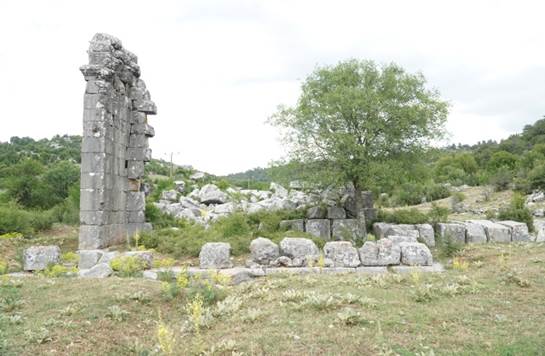 |
| Picture 1 | Picture 2 |
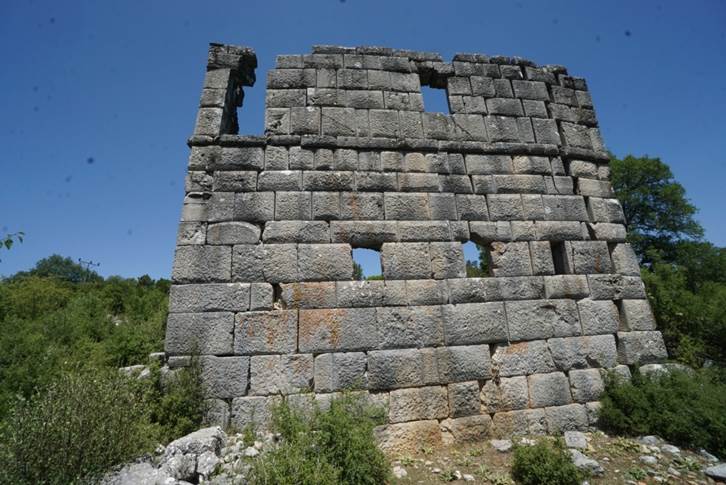 |
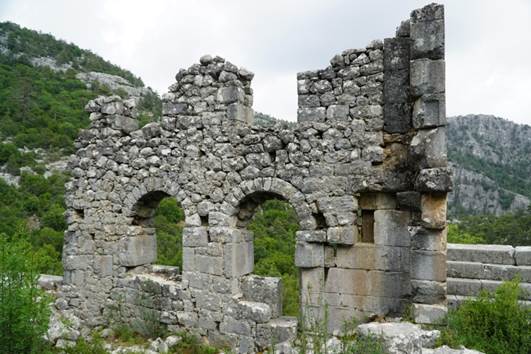 |
| Picture 3 | Picture 4 |
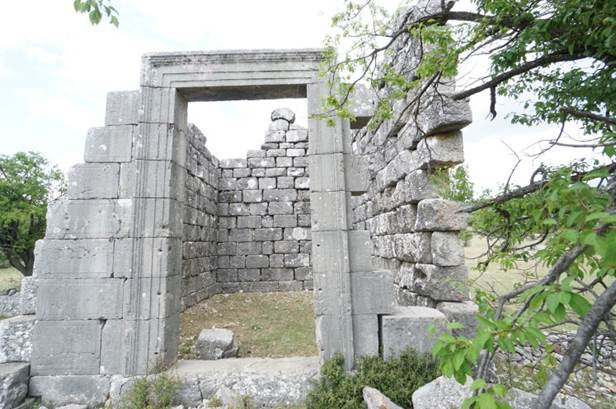 |
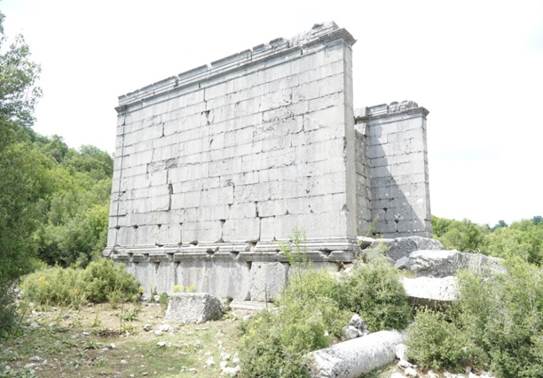 |
| Picture 5 | Picture 6 |